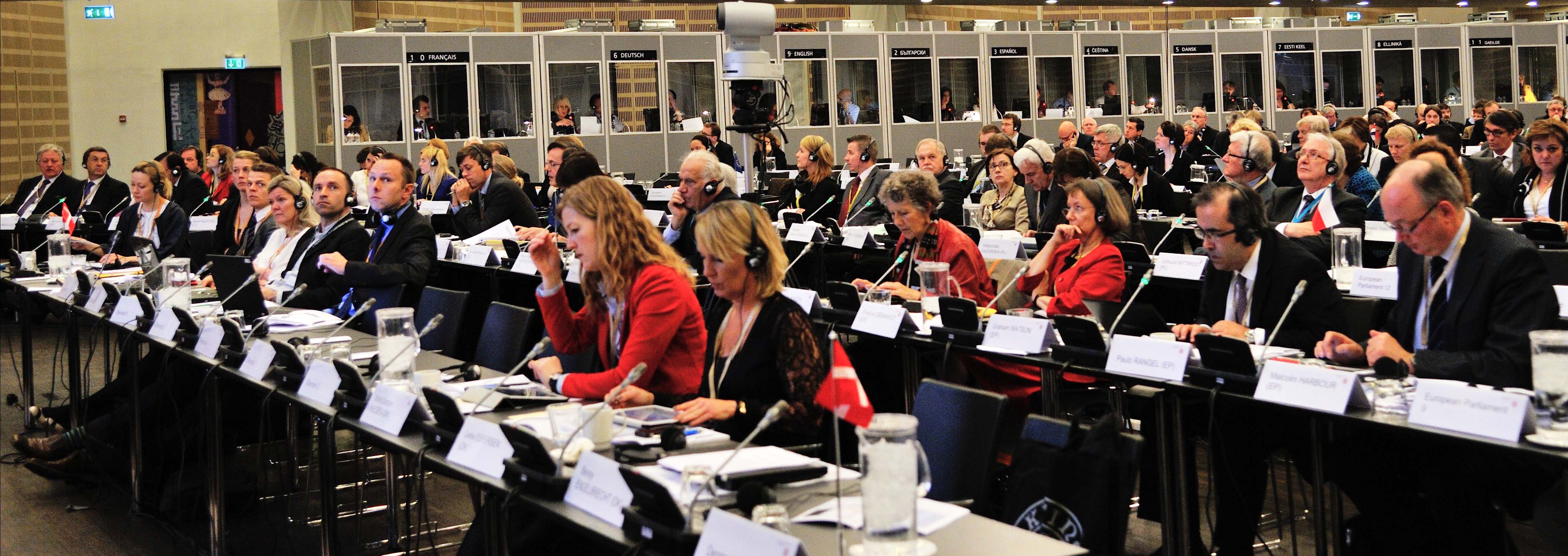Not long ago, Meeting Association MPI held its
annual EMEC Conference, this year in delightful Kracow, Poland. I had the rare
opportunity there to conduct a session under the title “The Meeting Lab”. It
involved a number of experiments about the behaviours of meeting participants
and how to influence these behaviours. The experiments were real, so we had no
idea what the outcomes would be. Session participants kindly acted as guinea
pigs (if any of the participants read this blog: thanks for being a sport!).
There was actually one participant with a weak spot for guinea pigs, so she had
the unique chance to feel like her favourite pet for a while – but this is
beside the point.
不久前,會議協會 MPI 在怡人的波蘭克拉克夫市舉辦了年度 EMEC 會議。我剛好有個難得的機會,主持了一場單元,主題是「會議實驗室」。會議中談到了幾種實驗,探討與會者的行爲,以及影響這些行為的方法。這些都是真正的實驗,當時沒人知道結果會如何。此單元的與會者好心擔任實驗白老鼠(如果您有機會讀到這篇部落格:在此感謝您當時的熱心參與)。而且剛好有個與會者特別喜歡天竺鼠,這次有機會扮演自己最喜歡的寵物,實在難得—不過我有點離題了。
In one experiment, I wanted to test whether it was possible to
influence feelings of benevolence participants would feel towards one another.
This is roughly how it went. Together with co-presenter Chema Gomes Merino, we
made two random groups, without any particular introduction. Group 1 sat in
theatre style and for five minutes listened to a presentation, defining
altruism. Group 2 went to the other side of the room and for the same amount of
time did a simple physical exercise. They performed it rhythmically and all at
the same time.
在一項實驗中,我想測試我們是否有可能影響與會者對彼此的好感。大致進行的方法如下:我和我的共同主持人馬利諾(Chema Gomes Merino)在沒有做什麼特別介紹的情況下,將與會者隨機分組。第一組以劇院式坐著,聆聽五分鐘關於利他主義的演講;而第二組被分配到另一個房間,做五分鐘的簡單體操,全部的人跟著同樣的節奏與時間運動。

photo credit: the will power method
At the end they all answered this question: “How close are other
people to you?” They independently expressed the feeling they had in that
moment, on a scale from 1-10, where 1 represented not close at all and 10 very
close. The average score for Group 1 was 6.2 while Group 2 produced a score of
7.8.
Although we didn’t perform the experiment according to rigid
scientific and statistical criteria, this is still a striking difference! And
even if we are not entirely sure whether it is a statistically significant
outcome, it is still worthwhile to think of a tentative conclusion.
結束後,每個人都要回答一個問題:你覺得你和其他人有多親近?大家各自作答,以1分到10分表述當時感受— 1分代表非常疏遠,10
分代表非常親近。第一組的平均分數為 6.2 分,而第二組則是
7.8 分。雖然這個實驗沒有嚴格的科學和統計標準,但這樣的差別還是相當引人注目!就算不確定這個結果是否有統計意義,還是值得我們深思,暫時做個結論。
Neuroscience research suggests that people who take part in
rhythmic group activities, such as line-dancing and Tai Chi, produce more
oxytocin than those under “control” circumstances. Oxytocin is a hormone that
is considered a stimulant for so-called pro-social behaviour. In words that my
auntie Mary would understand, it helps people to like each other. So, if in
meetings you want to align participants and help them to achieve shared
outcomes, it may be a good idea to offer them an hour of rhythmic, physical
group exercises. If only people weren’t so hung up about formalities, they
could try this at the next peace conference for some regional conflict…
神經科學研究表明,若人們投入一個有動感節奏的集體活動,像土風舞、打太極,會比那些處在「控制」環境中的人們產生更多的催產素(Oxytocin)。催產素是一種荷爾蒙,有助產生所謂的親社會行為。用大嬸也瞭解的白話文來說,這個激素有助人們相互產生好感。因此,在會議中,若你想要引導與會者,幫助他們達到共同目標,可以讓他們進行一個小時有節奏的、起來動一動的活動。要不是有些人過度拘謹,下一次想要解決區域衝突,召開和平會議時應該試試這招....
Of course it remains to be seen whether the effect really
translates into more benevolent behaviour of real meeting participants. That
sounds like a fascinating experiment to try during a next conference somewhere!
Any meeting organiser out there willing to try??
對於真實會議的與會者來說,這種方法在產生友善行為是否有幫助,還有待實際觀察。感覺應該在下次的某個會議裡實驗看看!哪位會議人要試試?






















